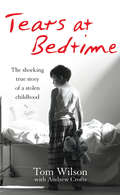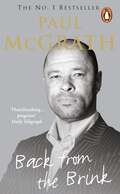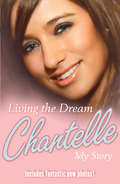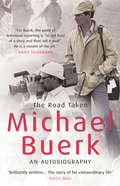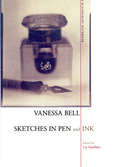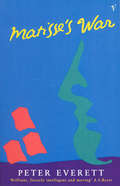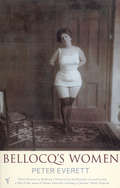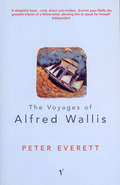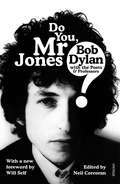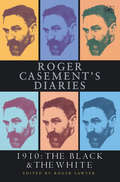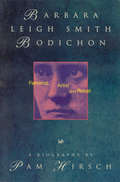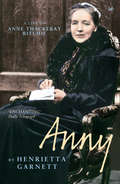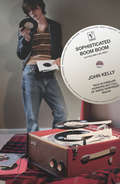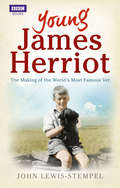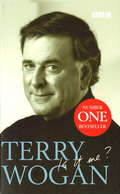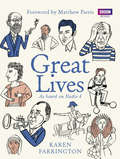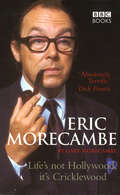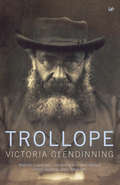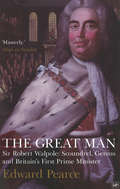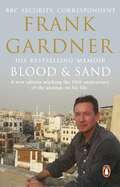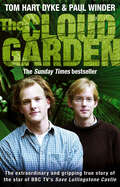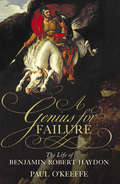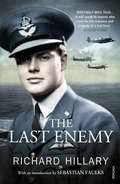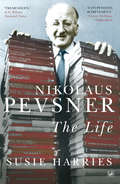- Table View
- List View
Tears at Bedtime
by Tom Wilson Andrew CroftsAt just six years old Tom Wilson fell prey to a predator of the worst sort. David Murphy was supposed to be his carer, instead he lifted his victims from their beds in the dead of night, and Tom was powerless to stop it.Tom endured years of horrific abuse which led to years of silence and self-torture. He grew up to be a troubled man, stumbling through care homes, schools, borstal and eventually prison. The damage that was done to him in those early years had destroyed his life.Then, one day, Tom read a newspaper article which unlocked the terrible memories he'd kept hidden for over forty tormented years. And a painful battle for justice began...
Back from the Brink: The Autobiography
by Paul McGrathPaul McGrath is Ireland's best loved sportsman and also its least understood. An iconic football presence during a professional career stretching over 14 years, he played for his country in the European Championship finals of 1988 and the World Cup finals of 1990 and 1994. But, behind the implied glamour of life in the employ of great English clubs like Manchester United and Aston Villa, McGrath wrestled with a range of destructive emotions that made his success in the game little short of miraculous.That story has until now never been told. It is a story that runs from a hard, hidden childhood spent in Dublin's orphanages all the way to the pain of two marriage break-ups and the struggle to cope with life after football. Quite apart from his all too public struggle with alcoholism, the story runs through the surreal highs and calamitous lows of a life lived habitually on the edge of chaos.It is not just a football story. It is an extraordinary human story that is certain to surprise with its candour.Here, for the first time, read about the father he never met; the mother whose love never died; the routine loneliness and ritual bullying endured by a black kid growing up behind closed doors in 1960s Dublin; the emotional breakdown suffered on leaving that institution; the recovery that - remarkably - brought him all the way to Old Trafford; the rollercoaster ride that followed. Here, the guilt, fear, self-loathing are all laid bare in a story fired with hope and determination for the future.It may well be the most candid sports book ever written.
Living the Dream: My Story
by Chantelle HoughtonFrom girl next door to the nation's sweetheart, this is the story of Chantelle's spectacular rise to fame and celebrity. Told in her own words, Chantelle takes us on what has been a sometimes bumpy, but a truly magical journey.As a little girl growing up in Essex, Chantelle Houghton dreamed of becoming famous and living the life of a star. But never could she have imagined just how this dream would eventually come true, transforming her into one of Britain's most loved and talked about celebrities.Here, we learn how her family played a crucial role in helping to shape her dreams and aspirations from an early age. We hear of the difficult times growing up and how Chantelle was able to overcome these obstacles, eventually launching a career in modeling.But it was to be Celebrity Big Brother that would change the course of Chantelle's life forever. She tells of the moment she first discovered she'd been picked, what really went on behind the scenes - the clashes of personalities in the house, the fallings out... and, of course, her falling in love with Preston.Winning Big Brother was a defining moment, and the madness that followed in those first few days outside of the house was to be just the beginning of Chantelle's new dream life. Learning to become accustomed to her new found fame hasn't been straightforward, but Chantelle has always kept her feet firmly on the ground. But it has been her love for Preston that has been the real fairy tale in Chantelle's extraordinary journey. She tells how their love grew away from the glare of paparazzi, and how this whirlwind romance ended up becoming the wedding of the year. In this honest and open autobiography, Chantelle shares her secret hopes and dreams for the future and looks back on the past year and reflects on just what an amazing fairy tale it's been.
The Road Taken
by Michael Buerk'Dawn, and as the sun breaks through the piercing chill of night on the plain outside Korem it lights up a biblical famine, now, in the Twentieth Century.'Those words opened Michael Buerk's first report on the Ethiopian famine for the 6 o'clock news on October 24th 1984. His reports sent shock waves round the world. The Live Aid concert, a direct consequence of Bob Geldof watching that broadcast, was watched by half the planet.Michael Buerk has reported on some of the biggest stories in our lifetime: the Flixborough chemical plant fire, the Birmingham pub bombing, Lockerbie. He was in Buenos Aires at the start of the Falklands War; he reported the death throes of apartheid in South Africa. He was the face of the BBC flagship evening news for many years and has fronted everything from the popular BBC1 series 999 to the erudite Radio 4 programme The Moral Maze. He has won every major award and is universally admired and respected for his intelligent and honest journalism.Here, he also reveals the private Michael Buerk, his bigamist father, his long and happy marriage to Christine and his delight at fatherhood.
Sketches In Pen And Ink: A Bloomsbury Notebook
by Vanessa BellVanessa Bell, artist, sister of Virginia Woolf, wife of Clive Bell and lover of Duncan Grant, is one of the most fascinating and modern figures of the Bloomsbury set, but unlike most of them she rarely put pen to writing paper. When she did, she was witty and illuminating about their early lives. The eldest of the Stephen family, she grew up with Virginia in Victorian gloom at Hyde Park Gate and later blossomed in bohemian style in Bloomsbury. From the twenties to the forties she lived and painted at Charleston Farmhouse like a heroine of the sixties and seventies, at the centre of a colourful world of family, friends, artists and intellectuals. Sketches in Pen and Ink is a unique collection of largely unpublished memoirs - most of them written to be read at meetings of the Memoir club, in which Vanessa writes with wit and charm about herself, her childhood, her remarkable family and friends, her moving relationship with Roger Fry, and her art. Her daughter, Angelica Garnett, has written a vivid and personal introduction which adds considerably to our understanding of this extraordinary woman and artist.
Matisse's War
by Peter EverettAt seventy, Henri Matisse is a trim, clean old gentleman with a passion for naked women. He is UN MONSTRE SACRE who depicts with passion and conviction only what he takes pleasure in, only what he chooses to see. He is art personified. If there were no Matisse there would be no art as such. . . . He has purged everything from his painting except anxieties concerning structure and colour; his struggle is with these alone! MATISSE'S WAR is a minutely researched yet fictional account of Matisse's life during the years 1939-1945. It is also a superb portrait of the lives of the major French artists and writers under the German occupation. Louis Aragon, Malraux, Picasso and Bonnard all appear prominently in the narrative.
Bellocq's Women
by Peter EverettIn 1912, in Storyville, the notorious red-light district of New Orleans, a photographer named E. J. Bellocq took a series of photographs of the women who worked in the brothels. Rediscovered in the 1950s, Bellocq's photographs have become famous, but the man himself remains a mystery.In Bellocq's Women, Peter Everett performs as remarkable a feat of fictional reconstruction as he did in Matisse's War and The Voyages of Alfred Wallis. All we have of Bellocq are his photographs and a few fragmentary memories; in this extraordinary novel Everett not only brings the photographer to life - and with him his strange, tortured relationship with his mother and two young girls, one his landlady's daughter, the other a child whore - but also his world - the opium dens and bar rooms of New Orleans and the whore houses with their surreal combination of violence and homeliness.
The Voyages Of Alfred Wallis
by Peter EverettAlfred Wallis was born in 1855 and died in a workhouse in Cornwall in 1942. A fisherman, sailing from Newlyn, Mousehole and St Ives, he began to paint in the 1920s - strange, brilliant pictures of ships and the sea. In 1928 he was discovered in St Ives by Ben Nicholson and Christopher Wood and for the rest of his life, alone in his tiny cottage, attacked by periods of madness, he painted furiously. In MATISSE'S WAR, Peter Everett explored the psyche of one of the most celebrated painters of our age. Here he performs a similar feat for another artist, one who knew no fame in his lifetime but whose paintings have found vast popularity since his death.
Do You Mr Jones?: Bob Dylan with the Poets and Professors
by Neil CorcoranIn 2016, Bob Dylan received the Nobel Prize in Literature ‘for having created new poetic expressions within the great American song tradition’. This collection of essays by leading poets and critics – with a new foreword by Will Self – examines Dylan’s poetic genius, as well as his astounding cultural influence over the decades.‘From Orpheus to Faiz, song and poetry have been closely linked. Dylan is the brilliant inheritor of the bardic tradition’ Salman Rushdie‘The most significant Western popular artist in any form or medium of the past sixty years’ Will Self‘For fifty and some years he has bent, coaxed, teased and persuaded words into lyric and narrative shapes that are at once extraordinary and inevitable’ Andrew Motion‘His haunting music and lyrics have always seemed, in the deepest sense, literary’ Joyce Carol Oates‘There is something inevitable about Bob Dylan… A storyteller pulling out all the stops – metaphor, allegory, repetition, precise detail… His virtue is in his style, his attitude, his disposition to the world’ Simon Armitage
Roger Casement's Diaries: 1910:The Black and the White
by Roger SawyerBorn in Ireland in 1864 Roger Casement acted as British Consul in various parts of Africa (1895-1904) and Brazil (1906-11) where he denounced atrocities among Congolese and Putumayo rubber workers. knighted in 1911, He returned to Ireland, where as an ardent nationalist he attempted to enlist German help for the cause. He was hanged for high treason in London in 1916. A compulsive diary writer, his so-called 'Black' Diaries were finally released into the public domain in 1994. At the time of his trial, these diaries-detailing his promiscuous homosexual activities in Brazil-were used to condemn him and, subsequently, to poison his reputation. Published here for the first time-as are his more public 'White' Diaries of the same year-they not only offer the reader the opportunity to judge their authenticity-still a matter of heated debate-but they also take us deep into the mind of the bravest, most selfless and practical humanitarian of the Edwardian age.
Barbara Leigh Smith Bodichon: Feminist, Artist and Rebel
by Pam HirschBarbara Leigh Smith Bodichon was the most unconventional and influential leader of the Victorian women's movement. Enormously talented, energetic and original, she was a feminist, law-reformer, painter, journalist, the close friend of George Eliot and a cousin of Florence Nightingale. As a painter, Barbara is now recognised as a vital figure among Pre-Raphaelite women artists. As a feminist she led four great campaigns: for married women's legal status, for the right to work, the right to vote and to education. Making brilliant use of unpublished journals and letters, Pam Hirsch has written a biography that is as lively and powerful as its subject, recreating the woman in all her moods, and placing her firmly in the context of women's struggle for equality.
Anny: A Life of Anny Thackeray Ritchie
by Henrietta GarnettAnne Thackeray Ritchie, daughter of the author of Vanity Fair and step-aunt of Virginia Woolf, was also a fine writer. Based on new and original research, this enchanting and evocative memoir paints the world of Anny's intricate web of relations and friends: children's parties with the Dickens family, holidays with Julia Margaret Cameron and the Tennysons, intimate scenes with Browning in Rome and Ruskin on Lake Coniston.In addition we read about Anny's own inner life: her near-obsession with her father: William Makepeace Thackeray, her escape into writing, her startling marriage to her second cousin and her godson, and the story of her sister Minny's passionate marriage to Leslie Stephen. We also learn of Stephen's second wife, Julia Jackson, mother of Vanessa Bell and Virginia Woolf. Meticulously researched, this intimate story draws not only on a wealth of letters, journals, hitherto unpublished sketches and photographs, but also on family legends passed down to the author through four generations. Illuminating, comic and touching, Anny reads like a novel, presenting a unique portrait of the rich literary world that formed the bridge between the Victorians and Bloomsbury.
Sophisticated Boom Boom
by John KellyIn Enniskillen, Co. Fermanagh, in the seventies, nothing happens. Every day. Teenagers Declan Lydon and his trusted friend Spit Maguire stand under lampposts waiting to be overtaken by some hormonal storm, to be enveloped by strange women, to finally make some connection with the glorious, glamorous world they know is out there somewhere. Their salvation comes through music. When, miraculously, Thin Lizzy come to town, Declan goes in to the concert in his brown cardigan and emerges wearing a black leather jacket...Sophisticated Boom Boom is a tender, hilarious account of the agonies and absurdities of growing up in a backwater of pebbledash and Space Invaders. Crucially, though, this is a love letter to the period and the place, and to the liberating, healing power of music that galvanises and transforms.
Young James Herriot: The Making of the World’s Most Famous Vet
by John Lewis-StempelSet in Glasgow in the 1930s, Young James Herriot is the fascinating story of Herriot’s formative years at veterinary college, recounting the tales behind his calling to work with animals and his early friendships. With no modern drugs, and a lot of trial-and-error, James sets about learning how to treat the local farm animals and the pets of city folk.Accompanied by a cast of eccentric professors and an ensemble of aspiring veterinarians, this book reveals a world now lost to us, showing how life in pre-war Britain changed an enthusiastic young student named Alf Wight into the man who would charm millions of readers the world over.
Terry Wogan - Is it me?
by Terry WoganTerry Wogan was one of Britain's best-loved radio and television celebrities witty, charming and relaxed and undoubtedly captured the nation's heart. Here, Terry tells his life story from his beginnings as a young Limerick boy to his incredible success as an enduring celebrity with shows such as Wogan and The Eurovision Song Contest. Is It Me? is written in Terry's own inimitable style, with self-deprecating humour and a wry take on everyday life. The story is a delightfully observed, light-hearted journey through Terry's personal and professional lives. After reluctantly starting his career in banking, Terry escaped to make a sucessful break into broadcasting with RTE. Fronting Children in Need, Wogan and The Eurovision Song Contest and collecting millions of listeners to his morning BBC 2 radio show, Wake Up To Wogan, he is now the most prolific and popular presenter at the BBC. 'I am sure it's a challenging read' Sir David Frost 'I don't remember him' Jimmy Young
Great Lives: As heard on Radio 4
by Karen FarringtonBased on the popular Radio 4 series, Great Lives highlights some of the world's most fascinating and influential characters. Chosen by the show's guests, each biography reveals the life and times of artists, sportsmen, statesmen, authors, monarchs, actors, musicians and scientists, showing why they inspire, what they achieved and how they have influenced the world at large. Discover the intriguing lives of Clement Attlee and Henri Matisse, King Alfred and Samuel Johnson, Tommy Cooper and Robert Kennedy, Robin Day and Edith Wharton, along with many more. From the famous to the obscure, the historical to the contemporary, each biography provides an insight into the character's personality, why they were driven to achieve so much, and separates fact from fiction. With a foreword by the show's presenter, Matthew Parris, Great Lives is an ideal gift for history and biography enthusiasts, and for fans of the Radio 4 series.
Eric Morecambe: Life's Not Hollywood It's Cricklewood
by Gary MorecambeIn this fascinating autobiography Erics son, Gary Morecambe, describes what it’s like to grow up in the presence of one of the best-loved and most fondly remembered of all British comedy greats. Eric and Ernie brought sunshine and laughter to the people of Britain for an amazing 22 years. Includes photos from the Morecambe family archive and unseen extracts from his father’s personal diaries. Frank and outspoken, this book provides a compelling insight into the man behind the laughter, a man who was constantly worried that one day he would be found out, who never lost his love of Long John Silver impressions, and who continued to work until heart disease finally killed him at only 58 years of age.
Trollope (The\complete Novels Of Anthony Trollope Ser.)
by Victoria GlendinningVictoria Glendinning provides a woman's view of Anthony Trollope, placing emphasis on family, particularly on his relationship with his mother. But it is Anthony as a husband and lover that intrigues her most. She looks at the nature of his love for his wife, Rose and at his love for Kate Field.
The Diaries Of Charles Greville
by Edward PearceCharles Greville (1794-1865) made his first occasional diary entries in 1814, but the diary only became a regular habit in the mid-1820s, continuing with occasional breaks, about which he is self-reproachful, through the reigns of George IV, William IV and Victoria. Finally, in 1860, after shaking his head over the worrying triumphs of Garibaldi, he closed it, once and for all. The grandson of a duke, Greville looked with a level and scornful eye upon royalty. George was 'the most worthless dog that ever lived'; William 'the silliest old gentleman in his own dominions, but what can be expected of a man with a head like a pineapple?' The diaries roused Queen Victoria - 'an odd woman' - from the lethargy of her widowhood.She spoke of Greville's 'indiscretion, indelicacy, ingratitude toward friends, betrayal of confidence and shameful disloyalty'.Greville's circle included Talleyrand, Wellington, Macaulay, Sydney Smith, Princess Lieven, Lord Grey, Melbourne, Guizot and Disraeli, as well as 'jockeys, bookmakers and blackguards'.As Clerk of the Privy Council, Greville works for a compromise on the Reform Bill.He witnesses Covent Garden theatre burning down.His closest friend, Lord De Ros, is caught cardsharping. Visiting Balmoral, he finds Albert and Victoria living 'not merely like small gentlefolks, but like very small gentlefolks'. When cholera comes, he writes laconically of 'Mrs Smith, young and beautiful, taken ill while dressing for Church and dead by nightfall.' Not a chatterbox, Charles Greville brilliantly assembles everyone else's chatter. This is the intelligent voice of another age, an uneasy aristocrat catching history on the turn and looking dubiously at the future.
The Great Man: Sir Robert Walpole: Scoundrel, Genius and Britain's First Prime Minister
by Edward PearceThe year 1721 has many splendours: great houses built by William Kent, fine pictures and the fruits of commerce. But there are also thirteen public hanging days a year, drunkenness is endemic, organised crime rampages through the streets. And politics are ferocious. Only a generation earlier, The Pretender failed to take the Crown; the new King is cursed as a damned foreigner; James's followers - the Jacobites - conspire and are persecuted; the South Sea Bubble collapses.Robert Walpole, once imprisoned for financial chicanery, assumes political control and becomes 'Prime Minister'. He personally detects a Jacobite plot, is dismissed in 1727 on the death of George I, recruits the new King's clever wife, Caroline, and bounces cheerfully back. Coarse, corrupt and cynical, Walpole dominates King, Parliament and Government until 1742. This is Mr Worldywiseman, keeping England out of war for twenty years and setting up a stable and growing economy. All politics of a kind we can recognise today begin with Robert Walpole. And here, in Edward Pearce's elegant book, he is brought vividly back to life.
Blood and Sand: The BBC security correspondent’s own extraordinary and inspiring story
by Frank GardnerOn the June 6, 2004, while on assignment in Riyadh, BBC security correspondent Frank Gardner and cameraman Simon Cumbers were ambushed by Islamist gunmen. Simon was killed outright. Frank was hit in the shoulder and leg. As he lay in the dust, a figure stood over him and pumped four more bullets into his body at point-blank range...Against all the odds, Frank Gardner survived. Today, although partly paralysed, Frank continues to travel the world, reporting and making documentaries for the BBC. This acclaimed memoir was brought up to date with a new chapter that recounted his return to Saudi Arabia for the first time since he was shot and the story he tells continues to move and inspire, and remains an affirmation of his deep understanding of - and affection for - the Islamic world in these uncertain times.___'Gardner tells his remarkable tale well and bravely, with an astonishing lack of anger and enduring love and respect for the Islamic world' SUNDAY TIMES'Brave, unsentimental and genuinely inspiring' EVENING STANDARD 'What makes Gardner's moving, often humorous, deeply personal story so important is the fact that he has woven into it a brilliantly dispassionate, clear-eyed account of the Islamic world' SCOTSMAN'A witty, self-deprecating, inspiring testament' DAILY TELEGRAPH
The Cloud Garden
by Paul Winder Tom Hart DykeThe Darién Gap is a place of legend. The only break in the Pan-American highway, which runs from Alaska to the tip of South America, it is an almost impregnable strip of swamp, jungle and cloud forest between the vast landmasses of North and South America. Stories of abduction and murder there are rife and in recent years more people have successfully climbed Everest or trekked to the South Pole than have crossed the Darién Gap. In 2000, Tom Hart Dyke, a young botanist, set off to Central America with one thing on his mind: orchids. He knew that in order to find the rare and beautiful species he so fervently admired, he would have to visit some of the most inhospitable places on earth. Unbeknown to Tom, another young explorer, Paul Winder, was backpacking through the area at the same time. Though he sometimes worked freelance in the City of London, Paul was a fearless and intrepid traveller, happier scaling volcanoes than lounging on beaches. In every bar and café along his route, rumours abounded of the Darién Gap - and the more he heard, the greater became his desire to make the journey. Pure chance brought Paul and Tom together in northern Mexico; they formed an instant bond and their fate was sealed. Ignoring a final, succinct warning from the Lonely Planet guide - 'Don't even think about it!' - Tom and Paul set off into the Darién: Tom in search of orchids, Paul in search of adventure. They would find plenty of each. For six days they made good progress. Then, just hours away from Colombia, the dream ended and the horror began. Paul and Tom were ambushed by FARC guerrillas who were to hold them hostage for the next nine months. From that day on, their survival was a matter of extraordinary endurance, incredible ingenuity and not a little good luck ...
A Genius for Failure: The Life of Benjamin Robert Haydon
by Paul O'Keeffe* Haydon's first attempt at suicide ended when the low calibre bullet fired from his pistol fractured his skull but failed to penetrate his brain. * His second attempt also failed: a deep slash across his throat left a large pool of blood at the entrance to his studio, but he was still able to reach his easel on the opposite side of the room. *Only his third attempt, another cut to the throat which sprayed blood across his unfinished canvas, was successful. He died face-down before the bespattered 'Alfred and the First British Jury', his final bid 'to improve the taste of the English people' through the High Art of historical painting.* Such intensity, struggle and near-comic inability to succeed encapsulate Haydon's career. Thirty years before his death his huge, iconic paintings had made him the toast of early 19th-century London, drawing paying crowds to the Egyptian Hall in Piccadilly for months and leading to nationwide tours. * However, his attempt to repeat such success three months before his death was to destroy him: barely a soul turned up, leaving the desperate painter alone, humiliated, and facing financial ruin. * In A Genius for Failure Paul O'Keeffe makes clear that the real tragedy of Haydon lay in the extent to which his failures were unwittingly engineered by his own actions - his refusal to resort to the painting of fashionable portraits, for example, and his self-destructively acrimonious relationship with the RA.* The company he kept - Keats, Shelley, Wordsworth, Sir Robert Peel and the Duke of Wellington, among many others - and the momentous events he lived through - The Battle of Waterloo, the Coronation of George IV, and the passing of the first Parliamentary Reform Bill - make A Genius for Failure not only the definitive biography of this fascinating and tragic painter, but a stirring portrayal of an age.
The Last Enemy: The Centenary Collection (G - Reference,information And Interdisciplinary Subjects Ser.)
by Richard HillaryThe Last Enemy is the story of Richard Hillary, one of Sebastian Faulks' three 'fatal englishmen'. In this extraordinary account, the author details his experiences as a fighter pilot in the Second World War, in which he was shot down, leading to months in hospital as part of Archibald McIndoe's 'Guinea Pig Club', undergoing pioneering plastic surgery to rebuild his face and hands. The Last Enemy was first published in 1942, just seven months before Hilary's untimely death in a second crash and has gone on to be hailed as one of the classic texts of World War Two.
Nikolaus Pevsner: The Life
by Susie HarriesBorn Nikolai Pewsner into a Russian-Jewish family in Leipzig in 1902, Nikolaus Pevsner was a dedicated scholar who pursued a promising career as an academic in Dresden and Göttingen. When, in 1933 Jews were no longer permitted to teach in German universities, he lost his job and looked for employment in England. Here, over a long and amazingly industrious career, he made himself an authority on the exploration and enjoyment of English art and architecture, so much so that his magisterial county-by-county series of 46 books on The Buildings of England (first published 1951 - 74) is usually referred to simply as 'Pevsner'. As a critic, academic and champion of Modernism, Pevsner became a central figure in the architectural consensus that accompanied post-war reconstruction; as a 'general practitioner' of architectural history, he covered an astonishing range, from Gothic cathedrals and Georgian coffee houses to the Festival of Britain and Brutalist tower blocks.Susie Harries explores the truth about Nikolaus Pevsner's reported sympathies with elements of Nazi ideology, his internment in England as an enemy alien and his sometimes painful assimilation into his country of exile. His Heftchen - secret diaries he kept from the age of 14 for another sixty years - reveal hidden aspirations and anxieties, as do his numerous letters (he wrote to his wife, Lola, every day that they were apart).Harries is the first biographer to have read Pevsner's private papers and, through them, to have seen into the workings of his mind.Her definitive biography is not only rich in context and far-ranging, but is also brought to life by quotations from Pevsner himself. He was born a Jew but converted to Lutheranism; trained in the rigour of German scholarship, he became an Everyman in his copious commissions, publications, broadcasts and lectures on art, architecture, design, education, town planning, social housing, conservation, Mannerism, the Bauhaus, the Victorians, Zeitgeist, Englishness and how a nation's character may, or must, be reflected in its art. His life - as an outsider yet an insider at the heart of English art history - illuminates both the predicament and the prowess of the continental émigrés who did so much to shape British culture after 1945.
